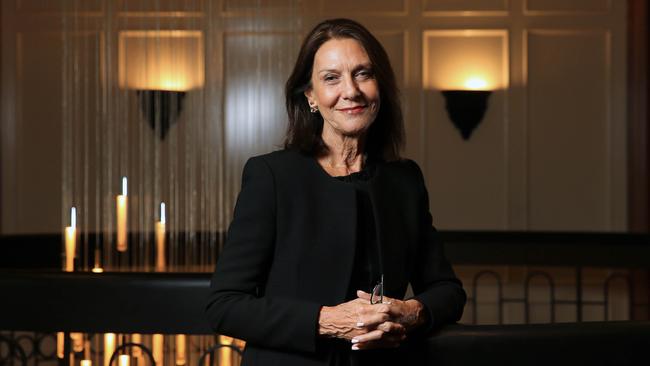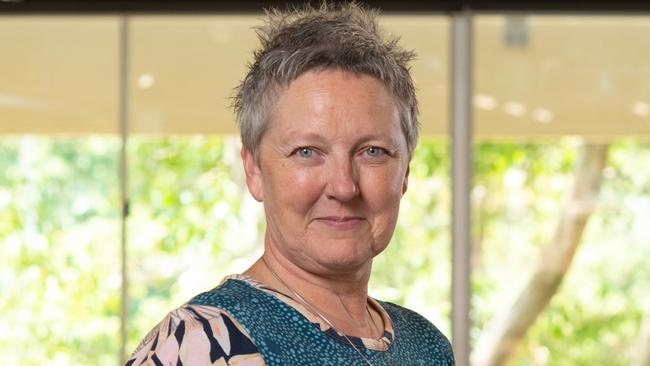Women’s work stagnates as nation deals with COVID-19
It’s been a challenging year for everyone in the workforce but have women been affected more than men? And what does next year hold?

SUE MORPHET
Non-executive director, president CEW (2018-2020)
What are the positives or negatives from the changes enforced by COVID?
A big win has been the shift in use of technology that was available but not embraced. Flexible work has benefited both men and women, and employers who may not have endorsed flexible work in the past. The benefits have been clearly demonstrated and concerns about productivity have proved to be unfounded. However, it is crucial that we get flexibility right. Enforced working from home demonstrated just how hard it was to balance family, home schooling and work, and how easily “work creep” can occur. The circumstances of COVID and crisis management have meant that many of us have had extraordinarily heavy work demands. It will be crucial as businesses recover and adopt to a new way of working that best practice structures are in place.
How does the year compare in terms of the challenge to society over your career?
I have never experienced a social crisis as big as this one. Jobs that were previously stable, rewarding and productive have been lost. It has significantly impacted our social fabric that would normally be a key support structure in a financial crisis. Now we have to rebuild, and this will take enormous perseverance — from leaders of business large and small, to families navigating constrained household budgets, to people young and old across our community searching for work or facing hardship. This is about generational welfare and wellbeing. If we don’t get this right in the next two or three years, our children in generations to come will shoulder the consequences.
Figures shows a stagnation in the issue of women at senior levels. Why?
I was extremely disappointed to see the lack of progress in our latest CEW Census, which is now in its fourth year. We’re not making any progress when it comes to the number of women in senior roles in our top companies — we’re flatlining. We know from research businesses do better when there are more women in leadership roles. Yet only one of 25 chief executives appointed in the past year was a woman and there are only 10 female CEOs across the whole of the ASX200. Nearly all CEOs are chosen from CFOs or line roles with profit and loss responsibility, but women currently hold only 12 per cent of line roles. Women are just not on the right ladder to enter our most senior appointments. We know from a wealth of research that this challenge is both a systemic one and one of bias. Women face significant roadblocks to their progression. We know the key challenges are the time women take out of the workforce to care for others (often in the years that form their careers), the lack of flexibility or family-friendly policies and practices at work, and bias and discrimination in recruitment and promotion. The trap of confusing so-called “merit” with someone who looks like, sounds like and has the same experiences as the man making the hiring decision, is unfortunately still far too pervasive.
If 2021 is a tougher year economically, could women go backwards?
More support is needed to mitigate the gendered impacts of this crisis. This includes bringing a gender lens to shape recovery responses. It requires government investment in women — in particular women’s workforce participation, job creation and prosperity. Businesses must prioritise gender diversity in plans for recovery. We should use this crisis as an opportunity to put our foot on the accelerator on gender equality and reap the benefits of diversity and capitalise on the broad talent pool across our community.
-

ROWENA BARRETT
Executive director, QUT Entrepreneurship
How has 2020 changed things for women in the workforce?
Increase in uncertainty. Amplified need for creativity and innovation. Made work from home (WFH) acceptable but needs to be balanced with managerial systems for team building, staying in touch, safe working, time and performance management.
Has the shift to WFH made it easier for women?
Depends what easier means. From my perspective, WFH made it easier to focus at the moment when uncertainty abounded: noise stopped, meetings focused and kept to time, dressing was about comfort rather than image or status, and people doubled down on their work. We saw a productivity boom. But for women with school-age or younger children, older parents/family, husbands/partners with “more important” jobs, then WFH will have taken us back and reinforced the stereotypical cultural norms about women as caregivers that we have been trying to change.
Positives or negatives from COVID-19?
Less commuting, an opportunity to stop and reflect on what is actually important, innovation, creativity. Zoom has levelled the playing field in some ways. It makes it easier to communicate and participate. QUT’s vice-chancellor runs town hall meetings which more than 2000 staff attend — that was never possible in the past. She and her executive team answer every question asked and we can all see the questions being asked. At QUT Entrepreneurship we run community entrepreneurship events like pitch night. We’ve found by going online we’ve engaged more diverse people and the process is much more inclusive. But that is countered by isolation, disconnection, uncertainty, economic insecurity and a rise in domestic violence, mental health, neglect of physical health, concentration of power, exposure of cognitive biases in thinking about solutions, and a reduction in diversity in decision making.
What sort of 2021 do you see?
Tough. People are tired, uncertain and feel insecure. We’ve not yet seen the real economic fallout of the pandemic. This will happen when JobKeeper support ends, banks ask for mortgage relief to be repaid, insurance costs rise, goods become more expensive because of supply chain gaps, and consumer confidence doesn’t rebound. The phenomenon of the “glass cliff” suggests that women are more likely to be appointed to leadership roles in a crisis. (There is, of course, work that disputes the existence of a glass cliff.) But in times of crisis we see the stereotypical thinking that women “take care” and men “take charge” emerge. Indeed, this is evident in media reporting about the performance of political leaders globally. There is some work that looked at the role of women on boards during the GFC which showed that the presence of women on boards improved results, possibly as a result of the “taking care” aspect: asking questions, taking oversight and monitoring outcomes. Again, there are a number of caveats to this finding. We could be optimistic and say that this may see more women appointed to leadership roles and board positions, or be pessimistic and say there is a bias for the status quo and, with fewer opportunities available, women will be forced to take whatever is offered. I chose to be optimistic, and through our entrepreneurship programs at QUT we teach all about the ways in which opportunity can be recognised and be pursued. We showcase diversity and tell stories that aim to spark confidence and encourage women to step out of their expected roles and step into the world of entrepreneurial action.
The CEW survey shows stagnation.
Cultural norms are responsible for this. Institutional change is necessary — smooth the path for participation, which requires much more than $240m (as allocated in the last federal budget). Stereotypes need to be called out. Diversity should be promoted. Women need to find support and take control of their careers; find progressive employers rather than perfect jobs. I dislike the whole “fix-the-woman” approach — more training — when it is actually a combination of approaches. No one thing will improve the presence of women in leadership roles.
-

DIANE SMITH-GANDER
Non-executive director, President CEW (2016-2018)
How has 2020 changed things for women?
2020 changed things for everyone. Women have been disproportionately impacted because they are disproportionately represented in part-time, low-paying and casual roles. These roles are the easiest to shed in tough times. Additionally, many of the low-paying personal service jobs that women dominate suddenly became reclassified as essential services (cleaning, nursing, aged care), with the expectation that women, as carers and nurturers, would carry on in these roles regardless of the increased risk profile of doing so. There might have been some applauding at the gate but not much upward movement in wages, which would be a better way of saying thank you.
What forces are at play impacting women?
Women don’t have the voice that men have in leadership of all kinds in the Australian economy. So women are reliant on people who have a different experience than them to be empathetic, and ensure support and stimulus programs address their needs. This has not worked in the past, so it’s highly unlikely to work now. Men are encouragingly wanting to step up and be more involved in the lives of their children.
Has the shift to WFH made things easier?
In the short term I suspect that most women have found working from home a bit of a zero-sum game. Removal of the commute is a positive. If there is a spouse and children at home there will be the negative of giving that care. For many women these factors have balanced out.
The CEW survey shows stagnation. Why?
The economy was already slowing and showing some stresses prior to COVID. There had been very little investment from government into the programs necessary to support increased female workforce participation and women’s leadership. Particularly around early learning and childcare. This lack of attention to what is really a key national cultural and economic problem is the root cause. Now the economy is slowing further, those with less power and influence will inevitably continue to be disproportionately negatively affected. Companies can make the excuse that the times do not allow for investment in changing the settings to foster truly inclusive cultures. There will be a real premium attached to experience and companies will be less inclined to take a chance on a new leader. I think we will see executive movements slow down for a while.
What sort of 2020 has it been for you?
I have been both energised and fatigued by what has presented in 2020. A crisis always gets the adrenaline pumping but as a company director you have to remember your role and allow management to present the solutions, and only lean in as much as needed to ensure a good result. There is an important role for the oversight and hindsight role of the director as much as you might have experience and skills that could be deployed in a “hands dirty” way. Doing nothing and waiting for your turn to contribute can be very hard.
Is there a danger women will go backwards?
Australia has gender-segregated industry and workforce. Women are more likely to work part-time and casual and be found in particular industry sectors. Their work is more likely to be insecure. They are more likely to take on caring roles in families. In heightened competition for jobs, those stereotypes will inform notions of merit. The gender pay gap is persistent and we’re unlikely to see that improve.

